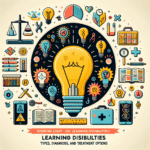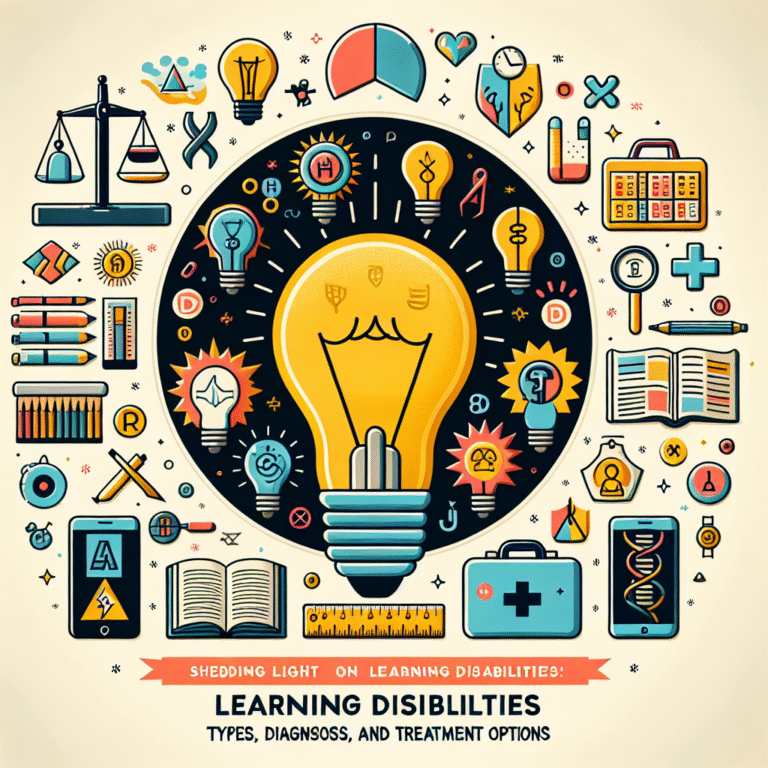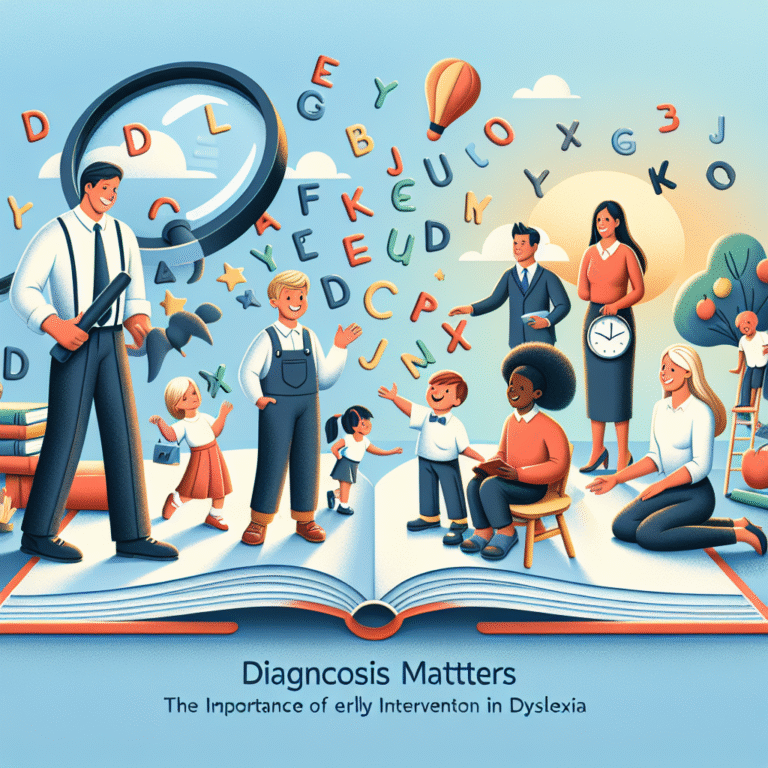
Balancing Act: Coping with Anxiety as a Parent of a Child with Learning Disabilities
Introduction
Navigating the world as a parent is fraught with challenges, but for those parents of children with learning disabilities, the journey can often feel like a high wire act. The keyword here is "Balancing Act: Coping with Anxiety as a Parent of a Child with Learning Disabilities," a mantra that encapsulates the myriad emotions and responsibilities these parents juggle daily. The reality is that parenting a child with learning disabilities can invite anxiety, uncertainty, and stress, yet it can also prompt incredible growth, resilience, and deep bonding experiences. It’s a balancing act that demands not only constant vigilance but also a significant amount of self-care and skillful resource management.
In this article, we will explore how to effectively cope with the inherent anxiety that accompanies this journey. We’ll provide unique insights, practical strategies, and relatable case studies that will instill a sense of hope and empower parents to reclaim balance in their lives while supporting their children.
Understanding Learning Disabilities and Their Impact on Families
What Are Learning Disabilities?
Learning disabilities (LD) are lifelong disabilities that impact how individuals process information. They can affect a child’s ability to read, write, understand math, or make social connections. The most common types include dyslexia, dyscalculia, and ADHD.
The Family Dynamic
When a child is diagnosed with a learning disability, the family dynamic can shift significantly. Parents often experience a range of emotions, including grief, guilt, frustration, and anxiety. They may worry about their child’s future and feel overwhelmed by the educational, emotional, and social implications of the diagnosis.
The Balancing Act: Understanding Anxiety in Parent-Child Relationships
The Nature of Anxiety
Anxiety is a common response to uncertainty. For parents of children with learning disabilities, the unknown can be particularly daunting. Concerns may arise about academic performance, peer relationships, and the child’s overall well-being.
Table 1: Common Sources of Anxiety for Parents
| Source of Anxiety | Description |
|---|---|
| Academic Performance | Worries about grades and learning milestones |
| Social Integration | Concerns about friendships and social scenarios |
| Future Independence | Fears around the child’s ability to thrive independently |
| Family Relationships | Effects of disability on sibling dynamics |
| School Support Systems | Anxiety surrounding the adequacy of school resources |
The Cycle of Anxiety
The anxiety parents feel can create a cycle of worry that might lead to overprotectiveness or frustration, which can, in turn, affect the child’s emotional health. Recognizing this cycle is vital in breaking the pattern and fostering a healthier relationship.
Strategies for Coping with Anxiety
1. Prioritize Self-Care
Why Self-Care Matters
When it comes to parenting, especially a child with learning disabilities, parents often put their needs on the back burner. However, prioritizing self-care is essential. This balances your emotional load and allows you to be more present and effective in supporting your child.
Engaging in Mindfulness Activities
Incorporating mindfulness practices such as meditation or yoga can significantly reduce anxiety levels.
2. Establish a Support Network
Building Your Circle
There’s strength in numbers. Engaging with other parents who share similar experiences can provide comfort and practical solutions. Consider joining or forming local or online support groups.
Case Study: The Johnson Family
The Johnsons faced many challenges with their son, who has dyslexia. They found solace in a local support group for parents of children with learning disabilities. Sharing experiences and strategies not only helped them feel less isolated but also provided actionable coping strategies, leading to a balanced approach to their son’s needs.
Analysis: The Power of Community
The Johnson family’s experience underscores the importance of community support. Creating a network can reduce feelings of isolation, provide emotional comfort, and present practical strategies that might enhance coping mechanisms.
3. Learn about Your Child’s Needs
Understanding Through Knowledge
Familiarize yourself with your child’s specific learning disability. Understanding how it affects learning and behavior can demystify their struggles and guide your support.
Helpful Resources:
- National Center for Learning Disabilities (NCLD)
- Understood.org
- Learning Disability Associations
4. Effective Communication Strategies
Promoting Open Dialogue
Encouraging open and honest communication with your child can decrease anxiety. Regularly checking in about their feelings and coping can create a safe space for expression.
5. Developing a Structured Routine
The Value of Consistency
Creating a predictable routine can provide your child with a sense of stability and security. Including structured times for homework, play, and downtime can create a balanced approach that fosters learning and emotional health.
Chart 1: Example Daily Routine
| Time | Activity |
|---|---|
| 8:00 AM | Breakfast |
| 8:30 AM | School Prep |
| 9:00 AM | School |
| 3:00 PM | After School Snack |
| 4:00 PM | Homework Time |
| 6:00 PM | Family Dinner |
| 7:30 PM | Relaxation/Free Time |
| 9:00 PM | Bedtime Routine |
Fostering Resilience in Children with Learning Disabilities
Encouraging Independence
Empowering your child with tools for independence is essential. This could involve setting up systems for self-organization or helping them learn coping strategies to handle school challenges.
Building Coping Skills
Teach your child self-soothing techniques such as deep breathing or journaling. These skills will support them in navigating stress independently.
Case Study: The Martinez Family
The Martinez family worked with a therapist to help their daughter, who has ADHD, develop coping strategies for moments of frustration. This proactive approach significantly improved her self-regulation skills and reduced anxiety during homework time.
Analysis: Involvement of Professional Guidance
Thestrategies used by the Martinez family illustrate the benefits of professional guidance in fostering independence. Therapeutic interventions are invaluable in equipping children with necessary emotional tools.
The Importance of Advocacy
Becoming Your Child’s Advocate
Understanding your rights and advocating for your child’s needs within the educational system is pivotal. Know the resources available, and don’t hesitate to seek accommodations.
Engaging with Educators
Building a cooperative relationship with teachers and school staff can create a supportive academic environment for your child. Regular communication will keep everyone on the same page.
Conclusion
The journey of parenting a child with learning disabilities is undeniably a balancing act that requires immense strength, patience, and love. By practicing self-care, fostering a supportive network, knowing your child’s needs, promoting open communication, and actively advocating on their behalf, parents can effectively manage anxiety while nurturing their child’s growth and independence.
As you navigate this balancing act, remember that the emotional health of both you and your child is paramount. Embrace the journey, celebrate the small victories, and understand that you’re not alone in this endeavor.
Key Takeaway
Every step towards understanding and supporting your child with learning disabilities is a step towards fostering a nurturing home environment. This balancing act is challenging yet rewarding, and the insights shared here will hopefully offer a roadmap to maintaining equilibrium.
FAQs
1. What resources are available for parents of children with learning disabilities?
There are numerous organizations, such as the National Center for Learning Disabilities (NCLD) and Understood.org, that provide valuable information, support groups, and educational resources.
2. How can I find support from other parents?
Consider looking for local support groups or online forums dedicated to parents of children with learning disabilities. Social media platforms can also be a great avenue to connect with other parents.
3. What should I do if I feel overwhelmed with anxiety?
Prioritize self-care and reach out for help. If anxiety becomes unmanageable, consulting a mental health professional can provide individualized strategies and support.
4. How can I communicate effectively with my child?
Create an open and supportive environment where feelings can be expressed. Active listening and validating their feelings can strengthen your communication.
5. How can I advocate for my child in school?
Familiarize yourself with your rights and your child’s educational needs. Collaborate directly with teachers and administrators to ensure your child receives appropriate accommodations.
By taking actionable steps and continuously learning, parents can not only cope but thrive, fostering an environment filled with love and understanding as they support their children’s unique journeys. It’s a transformative experience, turning anxiety into empowerment and connection.







